There are several counties in America, each with more than 10,000 homes, which have vacancy rates above 55%. The rate is above 60% in several.
Most people who follow unemployment and the housing crisis would expect high vacancy rates in hard-hit states including Nevada, Florida and Arizona. They were among the fastest growing areas from 2000 to 2010. Disaster struck once economic growth ended.
Palm Coast, Fla., Las Vegas and Cape Coral, Fla., were all among the former high fliers. Many large counties which have 20% or higher occupancy rates are in these same regions. Lee County, Fla., Yuma County, Ariz., Mohave County, Ariz., and Osceola, Fla., each had a precipitous drop in home prices and increases in vacancy rates as homebuyers disappeared when the economy went south.
Data from states and large metropolitan areas do not tell the story of how much the real estate disaster has turned certain areas in the country into ghost towns. Some of the affected regions are tourist destinations, but much of that traffic has disappeared as the recession has caused people to sell or desert vacation homes and delay trips for leisure. This makes these areas particularly desolate when tourists are not around.
The future of these areas is grim. Our research showed that many have sharply declining tax bases which have caused budget cuts. Forecasts are calling for the fiscal noose to tighten on them even tighter.
These are the American Ghost Towns of the 21st century. Each has a population of more than 10,000 along with vacancy rates of more than 55%, according to the 2010 U.S. Census.
1. Lake County, Mich.
Number of homes: 14,966
Vacancy rate: 66%
Population: 11,014
Lake County is located in central Michigan, a few hour's drive from the industrial cities of Flint, Pontiac and Detroit. It is in the heart of the state's fishing district and has been a vacation destination since the early years of the car industry. Many of those second home owners are now gone. This has helped drive nearly 20% of the residents below the poverty level and the median household income to under $27,000 a year.
2. Vilas County, Wis.
Number of homes: 25,116
Vacancy rate: 62%
Population: 21,919
Vilas County is located at the uppermost part of Wisconsin, near the border of the Northern Peninsula of Michigan. The county is plagued by two things. The first is that it has been a tourist area for Wisconsin residents. The second is that a significant part of the county's economy depends on the logging, forestry and construction industries, each of which struggled during the recession.
3. Summit County, Colo.
Number of homes: 29,842
Vacancy rate: 61%
Population: 26,843
Summit County sits northwest of the Pike National Forest and due west of Denver. The area is near to several major ski resorts. The local paper reports on revenue "The decrease isn't linked to the dramatic dip in assessed property values in Summit County, expected to be near 20 percent lower than in the previous valuation period. Those changes will show up in property tax bills starting in 2011."
4. Worcester County, Md.
Number of homes: 55,749
Vacancy rate: 60%
Population: 49,274
The Maryland State Department of Assessments and Taxation recently estimated that the county would have a sharp drop in its tax base in fiscal year 2012 and "another, more drastic, revenue decrease" for the fiscal year that follows. The twin engines of county's economy are tourism and agriculture. Experts believe the tourism business in Maryland's Eastern Shore could stay crippled for years.
5. Mono County, Calif.
Number of homes: 13,912
Vacancy rate: 59%
Population: 12,774
Mono County sits near the Sierra Nevada and Yosemite National Parks. Ironically, Bodie, the official state gold rush ghost town, is in Mono County. Finance Director Brian Muir recently said he expected another property drop in property tax receipts. Like most of the other counties on this list, tourism is a major source of revenue for its economy.
6. Dare County, N.C.
Number of homes: 33,492
Vacancy rate: 57%
Population: 95,828
Dare County includes the northern-most parts of North Carolina's Outer Banks. The situation in the vacation area is so severe that the "Outer Banks Voice" recently wrote, "If Dare County Manager Bobby Outten was intending to sound an alarm by suggesting that the EMS helicopter and school nurses were expendable in the next budget, he probably succeeded." His comments are unlikely to be terribly different from those of other executives of counties on the list. Vacant homes and homes which lose double-digit amounts of their value each year irreparably undermine the tax base. And, as services fall, fewer potential homeowners will consider investing in the area.
7. Dukes County, Mass.
Number of homes: 17,188
Vacancy rate: 57%
Population: 15,527
Dukes County encompasses the island of Martha's Vineyard in Massachusetts. The enemy of the local budget is, as is true for most of the counties on this list, falling property values. Vacationers still flock to the resort island in the summer as do seasonal workers. The county is close to deserted when the weather turns cold.
8. Sawyer County, Wis.
Number of homes: 15,975
Vacancy rate: 56%
Population: 17,117
The Sawyer County website has a link, prominently placed on the homepage, which goes to a list of foreclosed homes for sales by the sheriff's department. There are not many new homebuyers. The number of people who live in the county was flat from 2000 to 2010. The Hayward Community School District, located in Sawyer, will probably close one of its elementary schools. Sawyer is a fishing and biking destination, and has suffered from a drop in travelers from the southern part of the state.
9. Burnett County, Wis.
Number of homes: 15,278
Vacancy rate: 55%
Population: 16,196
Burnett County is at the western most part of Wisconsin near Minneapolis. The county's population fell from 2000 to 2010. County Administrator Candace Fitzgerald recently said that proposed budget cuts "could prove to be devastating and very hard to recover from." The county's attractiveness as a tourist destination has faltered. Home values have fallen for three consecutive years. Cuts in the Wisconsin State budget will lower state aid. People are more likely to default and abandon vacation homes than their primary residences. This has probably been an important reason vacancy rates in rural tourist areas in Wisconsin are so high.
10. Aitkin County, Minn.
Number of homes: 16,029
Vacancy rate: 54%
Population: 15,736
Aitkin County offers visitors two seasons for recreation. The first is in the summer when fishing is popular. The second is winter when snowmobilers come north. Aitkin is the last of the counties on the 24/7 Wall St. list demonstrating that rural regions which rely on tourists are especially exposed to economic hardship in a recession. They may take longer to recover than some industrialized cities do.
http://finance.yahoo.com/real-estate...tury-247wallst
Most people who follow unemployment and the housing crisis would expect high vacancy rates in hard-hit states including Nevada, Florida and Arizona. They were among the fastest growing areas from 2000 to 2010. Disaster struck once economic growth ended.
Palm Coast, Fla., Las Vegas and Cape Coral, Fla., were all among the former high fliers. Many large counties which have 20% or higher occupancy rates are in these same regions. Lee County, Fla., Yuma County, Ariz., Mohave County, Ariz., and Osceola, Fla., each had a precipitous drop in home prices and increases in vacancy rates as homebuyers disappeared when the economy went south.
Data from states and large metropolitan areas do not tell the story of how much the real estate disaster has turned certain areas in the country into ghost towns. Some of the affected regions are tourist destinations, but much of that traffic has disappeared as the recession has caused people to sell or desert vacation homes and delay trips for leisure. This makes these areas particularly desolate when tourists are not around.
The future of these areas is grim. Our research showed that many have sharply declining tax bases which have caused budget cuts. Forecasts are calling for the fiscal noose to tighten on them even tighter.
These are the American Ghost Towns of the 21st century. Each has a population of more than 10,000 along with vacancy rates of more than 55%, according to the 2010 U.S. Census.
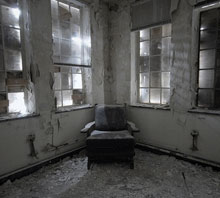 |
Number of homes: 14,966
Vacancy rate: 66%
Population: 11,014
Lake County is located in central Michigan, a few hour's drive from the industrial cities of Flint, Pontiac and Detroit. It is in the heart of the state's fishing district and has been a vacation destination since the early years of the car industry. Many of those second home owners are now gone. This has helped drive nearly 20% of the residents below the poverty level and the median household income to under $27,000 a year.
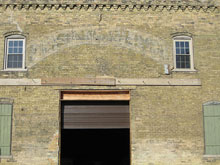 |
Number of homes: 25,116
Vacancy rate: 62%
Population: 21,919
Vilas County is located at the uppermost part of Wisconsin, near the border of the Northern Peninsula of Michigan. The county is plagued by two things. The first is that it has been a tourist area for Wisconsin residents. The second is that a significant part of the county's economy depends on the logging, forestry and construction industries, each of which struggled during the recession.
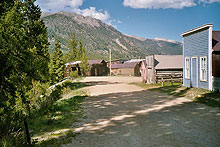 |
Number of homes: 29,842
Vacancy rate: 61%
Population: 26,843
Summit County sits northwest of the Pike National Forest and due west of Denver. The area is near to several major ski resorts. The local paper reports on revenue "The decrease isn't linked to the dramatic dip in assessed property values in Summit County, expected to be near 20 percent lower than in the previous valuation period. Those changes will show up in property tax bills starting in 2011."
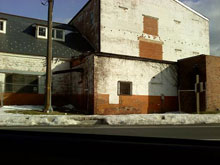 |
Number of homes: 55,749
Vacancy rate: 60%
Population: 49,274
The Maryland State Department of Assessments and Taxation recently estimated that the county would have a sharp drop in its tax base in fiscal year 2012 and "another, more drastic, revenue decrease" for the fiscal year that follows. The twin engines of county's economy are tourism and agriculture. Experts believe the tourism business in Maryland's Eastern Shore could stay crippled for years.
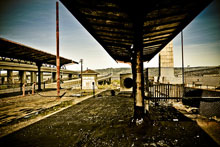 |
Number of homes: 13,912
Vacancy rate: 59%
Population: 12,774
Mono County sits near the Sierra Nevada and Yosemite National Parks. Ironically, Bodie, the official state gold rush ghost town, is in Mono County. Finance Director Brian Muir recently said he expected another property drop in property tax receipts. Like most of the other counties on this list, tourism is a major source of revenue for its economy.
 |
Number of homes: 33,492
Vacancy rate: 57%
Population: 95,828
Dare County includes the northern-most parts of North Carolina's Outer Banks. The situation in the vacation area is so severe that the "Outer Banks Voice" recently wrote, "If Dare County Manager Bobby Outten was intending to sound an alarm by suggesting that the EMS helicopter and school nurses were expendable in the next budget, he probably succeeded." His comments are unlikely to be terribly different from those of other executives of counties on the list. Vacant homes and homes which lose double-digit amounts of their value each year irreparably undermine the tax base. And, as services fall, fewer potential homeowners will consider investing in the area.
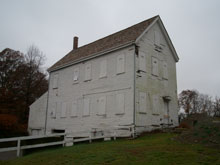 |
Number of homes: 17,188
Vacancy rate: 57%
Population: 15,527
Dukes County encompasses the island of Martha's Vineyard in Massachusetts. The enemy of the local budget is, as is true for most of the counties on this list, falling property values. Vacationers still flock to the resort island in the summer as do seasonal workers. The county is close to deserted when the weather turns cold.
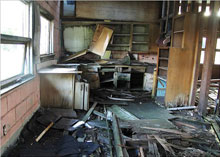 |
Number of homes: 15,975
Vacancy rate: 56%
Population: 17,117
The Sawyer County website has a link, prominently placed on the homepage, which goes to a list of foreclosed homes for sales by the sheriff's department. There are not many new homebuyers. The number of people who live in the county was flat from 2000 to 2010. The Hayward Community School District, located in Sawyer, will probably close one of its elementary schools. Sawyer is a fishing and biking destination, and has suffered from a drop in travelers from the southern part of the state.
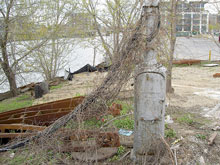 |
Number of homes: 15,278
Vacancy rate: 55%
Population: 16,196
Burnett County is at the western most part of Wisconsin near Minneapolis. The county's population fell from 2000 to 2010. County Administrator Candace Fitzgerald recently said that proposed budget cuts "could prove to be devastating and very hard to recover from." The county's attractiveness as a tourist destination has faltered. Home values have fallen for three consecutive years. Cuts in the Wisconsin State budget will lower state aid. People are more likely to default and abandon vacation homes than their primary residences. This has probably been an important reason vacancy rates in rural tourist areas in Wisconsin are so high.
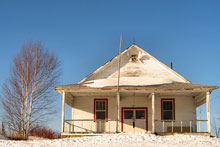 |
Number of homes: 16,029
Vacancy rate: 54%
Population: 15,736
Aitkin County offers visitors two seasons for recreation. The first is in the summer when fishing is popular. The second is winter when snowmobilers come north. Aitkin is the last of the counties on the 24/7 Wall St. list demonstrating that rural regions which rely on tourists are especially exposed to economic hardship in a recession. They may take longer to recover than some industrialized cities do.
http://finance.yahoo.com/real-estate...tury-247wallst



Comment